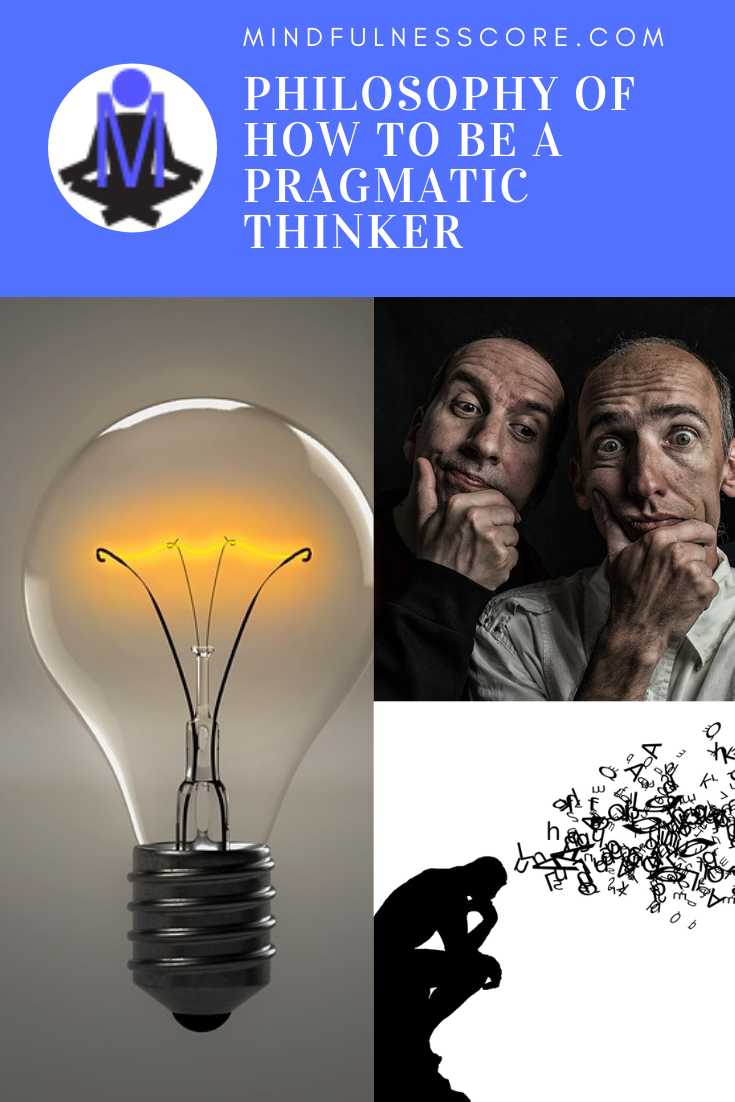Think and Learn: Philosophy of How To Be a Pragmatic Thinker

As per psychology, different people are born with different virtues. Some are stronger in the realm of emotions while others lean a little more towards pragmatism. But that doesn’t mean you have to be content with what you are naturally good at. Emotions might be your strength, but in order to lead a balanced life, it is imperative that you are able to think practically from time to time as well. The good news is that just because you have always been playing in the field of emotions doesn’t mean that pragmatism is a territory that is off-limits for you. There are a few simple to follow yet effective strategies that you can use to boost your skills of practical thinking.
Truth is, pragmatic thinking is not as complicated as you would think. The reason why it appears intimidating is the lack of information that disables you from mastering the skill. Putting an effort into mastering the skill of pragmatic thinking is worth the effort since pragmatism blends well with your common sense. Once you have learned to be a practical thinker, it will all start to come naturally to you. There will no longer be a need to put an effort into approaching any given problem in a practical fashion.
Remember that giving too much into emotions have a way of presenting a problem as greater than it actually is. Such an exaggeration can cause unnecessary complications in your personal and professional life leading to stress that could easily have been avoided if you have opted for pragmatic thinking rather than submitting entirely to your emotions. With a hope that you learn to maintain a balance between your emotions and pragmatism in order to make the right decisions, we have highlighted the top 5 ways that you can adopt to enhance your ability of practical thinking.
Let’s Recall The Facts
The reason why we enable our emotions to get the best of us is that we fail to connect our thought process with the facts that are available at our disposable. Once the arguments are not being based on logic, it is entirely up to your emotions to exaggerate a given scenario as much as they can inside your head. For instance, imagine that you are best friends with someone named Peter for a number of years. Recently, though, you decided to go to a different school for higher studies than your best friend. Naturally, you will be in contact with him via social media. A few months later, you find a picture of him spending quality time with his new friends from his new school. If you submit entirely to your emotions, you would perhaps hurt yourself with a thought that you are no longer Peter’s best friend. From here on, you would start to link all of his actions with this self-fulfilling prophecy that you are no longer his best friends. For example, he ignored your call because he was in class. Your emotions would immediately push you into thinking that he is hanging out with his new friends and don’t have time for you which is why he ignored your call.
A pragmatic thinker, on the other hand, would try to analyze and evaluate the facts that are at his disposal. In the example given above, the only thing that you know for sure is that Peter has made new friends which was kind of a given since he was going to a new school and you make new friends for sure as you get to meet new people. Focusing on this fact will make you realize that just because he is friends with them, doesn’t make him any less of a friend with you. So, as evident, the first step to thinking practically is to keeping your focus on the fact and avoiding assumptions.
What Could Be An Alternative Explanation?
Alright, so you have been relying entirely on your emotions throughout your life in shaping your thought-process and making your decisions. Whatever the scenario, your emotions are usually the first entity to come into play with an explanation for what happened and why did it happen. In order to transform yourself into more of a pragmatic thinker, the simplest strategy is to take your time and evaluate the alternative explanations for a given scenario. Turn it into a game for yourself. Since your emotional side clings to the foreground, you’d have the emotional view of what’s happening already. Tell yourself to think of at least four other explanations to what happened and why did it happen. Such a strategy works because more often than not, it is only a matter of reminding yourself that alternative explanations exist in order to turn yourself into a more practical thinker.
Let’s go back to the example stated above. When Peter missed your call, the emotional explanation was the one that is mentioned above. Now is the time to think of alternative explanations. For instance, you could tell yourself that maybe he’d be in class right now. If you called during an odd hour, you may remind yourself that there is a possibility that he is sleeping. What else? Perhaps his phone was on silent and he’ll call you back in a while when he sees on his phone that you called. The more you start to explore the alternative explanations, the sooner you start to realize that with endless ways to approach a given problem, it is highly likely that your emotional approach may not be the precise one.
Get A Second Opinion
What does a doctor do if he is confronted with a case that he has never handled before or if he feels a little unsure about it? He immediately refers the patient to another doctor in hopes of getting a second opinion, right? The same principle applies when you are trying to transform yourself into a pragmatic thinker. Since you are naturally better with the emotions, it might not be too convenient for you, in the beginning, to bring rationale into your thought process. But that doesn’t mean you are helpless since there are plenty of people around you that you can share the scenario with. Yes, it’s never a good idea to share what’s going on in your life with everyone. But there are a few people that you are close with, the people with whom you can share anything and everything. Like your siblings, a best friend, perhaps your mom or dad, etc. It helps even better if you know that they lean more towards being practical.
Sharing your experience with your loved ones has the potential to introduce you to a whole new approach that you never even imagined. Sometimes, the way they choose to see a picture makes so much more sense than how you have been approaching it. This is how you get a step closer to learning the art of pragmatic thinking by getting the opinions of people that you are close with. The more you expose yourself to others’ practical ideas and opinions, the more your brain learns to adapt to this new way of thinking until it becomes a natural part of it as well.
Remove the “I” From The Situation
This is perhaps an extension of getting the third-person perspective that helps you adopt practical thinking. Have you ever noticed that you are impeccable when it comes to giving advice to someone else but it is almost always impossible for you to apply the same advice on yourself? The reason is that when we are not a part of any given situation, our perspective is usually significantly different i-e more practical. In other words, being a spectator enables you to visualize the given scenario as a smaller part of a bigger picture. When your focus is on the bigger picture, things make more sense and your thought-process is automatically turned into more practical.
Therefore, if you are stuck in a problem and are looking forward to a pragmatic view for a solution, all you have to do is take a step back and remove yourself from the situation. Try to imagine it as an experience of your friend. What if he were the one in this situation and came to you to ask for your help. What would be the solution that you will give him? Whatever is your answer is based on pragmatic thinking and you can simply then focus on applying it on yourself.
Final Note
More often than not, thinking practically is synonymous to thinking clearly. It just means that your thought-process is not being polluted with the likes of emotions or assumptions. It helps a great deal in making the informed decisions since your decisions are then premised on facts, logic, and rationale. Be it your emotions or your thoughts, for a happy life, it is imperative that you are the one in control. By learning the art of pragmatic thinking, you restore the balance between your emotions and pragmatism that paves the way for a better, more content life.

